William Holman Hunt was a renowned British painter of the 19th century. He was born in 1827 in London. His father worked as a warehouse manager in Cheapside.
William spent most of his childhood reading the Bible. Even when the family went to the church, William could be seen reading his copy of the Bible. He worked as an office clerk when he was merely 12-year-old boy.
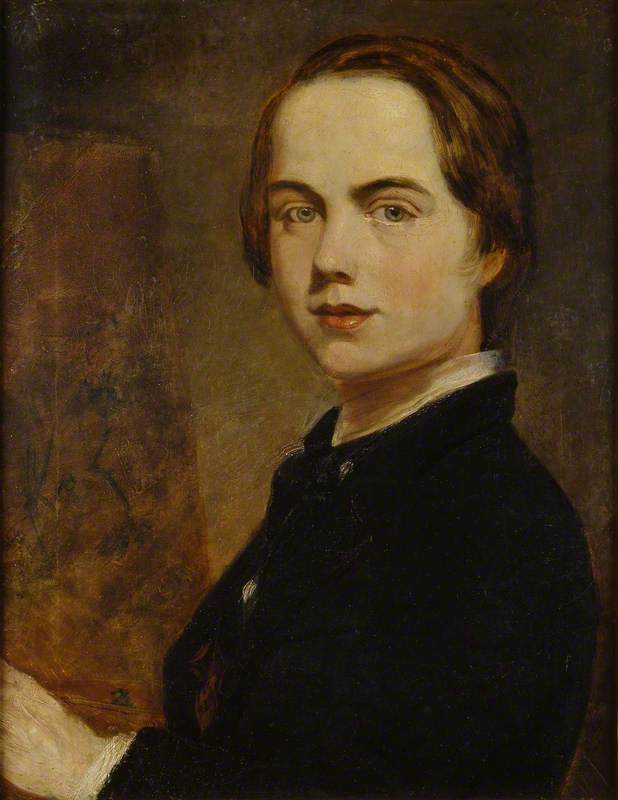
Pre-Raphaelite Brotherhood
He studied arts at the prestigious Royal Academy art school. His parents were at the beginning hesitant to send him to an art school. However, William, in the end, was able to convince his parents and they agreed to enrol him in the Royal Academy art school. William thus joined the Royal Academy art school in 1844.
Although he joined the art school, he felt depressed there. William met and became life-long friends with Dante Gabriel Rossetti and John Everett Millais at the Academy. This trio, later on, formed the Pre-Raphaelite Brotherhood.
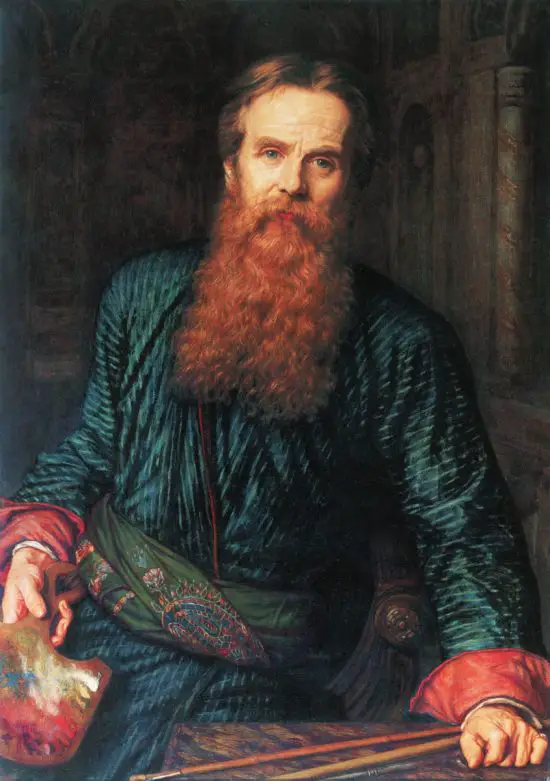
Family life
William was married to Fanny Waugh. Together, they had a son in 1866 in Florence. They named their child Cyril. However, within a short period of time after giving birth, Fanny died. The death of his wife left a vacuum in William’s life. He engaged his time in making a sculpted tomb for Fanny in Florence.
Her sculpted tomb was later on brought to the English Cemetery. Apart from making a memorial tomb, William made a posthumous painting of his beloved wife wherein he has captured her wearing her favourite peacock shawl. After Fanny’s death, William married again. He married Fanny’s sister, Edith in 1873. However, in order to marry Edith, William had to travel to a foreign country. The reason being, that it was the law of the land in England that a widower could not marry his wife’s sister.
Famous Works of William Holman Hunt
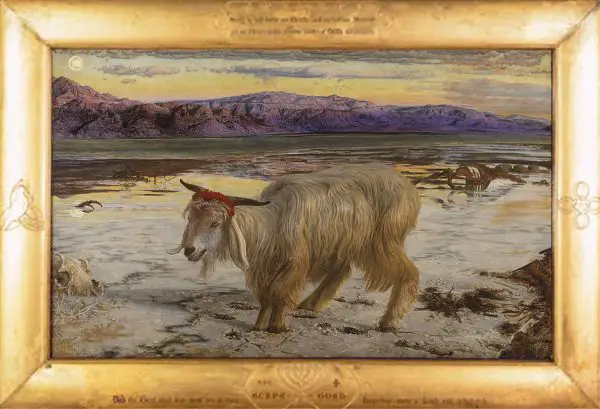
Although William was extremely popular for his unique style of painting, he was not always so successful. In fact, during the early few years of his life, he did not taste much success. He was subjected to criticism for his style of paintings.
His religious paintings brought him appreciation and recognition. From 1850 onwards, his paintings were exhibited. It was at these exhibitions that many art admirers began to buy William’s paintings. Some of his popular work include ‘The Scapegoat’(1854-1855), ‘The Triumph of the Innocents’ (around 1875 in Jerusalem), ‘The Light of the World’, ‘The Shadow of Death’, ‘The Finding of the Saviour of the Temple’, etc.
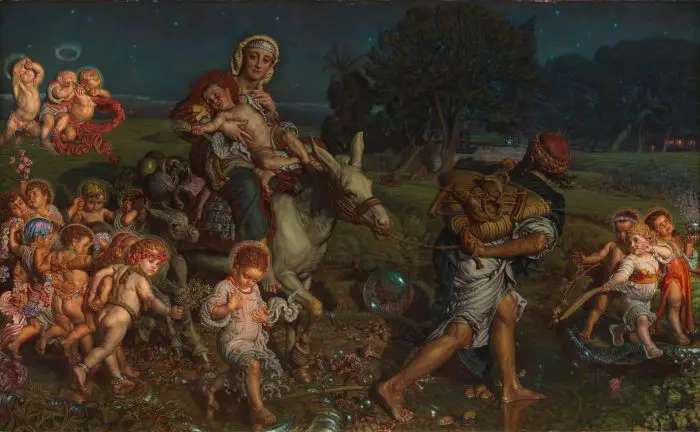
‘The Light of the World’ considered to be major work William’s career, is kept in the chapel at Keble College in Oxford. The painting represents Christian salvation. Through this painting, William wanted to show the religious aspect of Christianity.
‘The Finding of the Saviour of the Temple’ was considered to be the first attempt by William at religious naturalism. For him, attention to physical details of the scene was of utmost importance. ‘The Scapegoat’ was one of his major works whose inspiration was drawn from his tour to the Middle Eastern countries like Syria and Palestine.
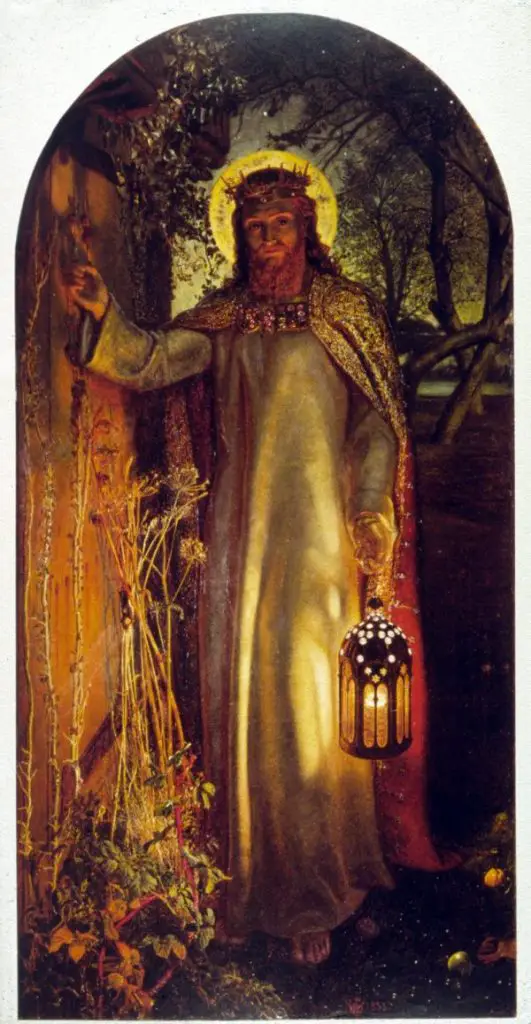
Another of his work titled ‘The Awakening Conscience’ was completed in 1853. It is a religious painting and is now placed at the Tate Gallery in London. One of his paintings was inspired by an 1820 poem titled ‘The Eve of St Agnes’.
The poem was written by noted poet John Keats. This painting by Hunt was accepted at the Royal Academy Exhibition. ‘The Hireling Shepherd’ is considered as one of the major works by Hunt in Pre-Raphaelite style. ‘The Miracle of the Sacred Fire’ completed in the year 1898 was the last work by William Holman Hunt.
His work took him to places in the Middle Eastern region like Egypt, Syria and Palestine. He described Egypt as the ‘Holy Land’. In his Self-Portrait, William has portrayed himself wearing an Arab robe over his European clothes. The Self Portrait depicts William in the light of multiple roles like traveler, painter, adventurer, etc,. This shows that he liked to and could easily gel in with the local crowd.
The Self Portrait that William painted of himself is placed in the Uffizi Gallery in Florence, Italy. He even travelled to Jerusalem around 1875. William built his own house and studio in Jerusalem from where he worked. His frequent visits to the Middle Eastern region clearly show that he had a special attachment for this place. After all, most of his popular work (religious paintings) has been inspired from instances drawn during his stay in the various Middle Eastern countries. William Hunt visited the Middle Eastern land until the late 19th century.
Since an early age, William was influenced by the works of writer John Ruskin. William Hunt gave emphasis on elements like ‘light’ whilst painting. Other crucial elements that distinguished his work from other contemporary artists were attention to detail, color combinations and symbolism. Nature plays an important role in all of Hunt’s paintings.
Pre-Raphaelite movement objectives
He was famous for founding the Pre-Raphaelite movement in 1848. Pre-Raphaelite Brotherhood was thus established. Apart from Hunt, its members were Dante Gabriel Rossetti and John Everett Millais. The movement started by these Victorian artists focused on breaking free from the shackles of what they felt was artificial painting.
The movement focused on nature as it should be and be depicted in the paintings in the same way. They felt that nature is the true representation of Victorian art. The Pre-Raphaelite Brotherhood was highly impressed by the Italian style of painting. Italian painters had been since long utilizing nature as the core ingredient of their painting. The Pre-Raphaelite came to be recognized as a style of British art in the Victorian period.
Famous paintings
William Holman Hunt has many paintings to his credit. It is a known fact that he is the artist/ painter of over 200 paintings. He also wrote and successfully published his autobiography in 1905. His autobiography was titled as ‘Pre-Raphaelitism and the Pre-Raphaelite Brotherhood’.
In his autobiography, William Hunt describes the various experiences that he had whilst travelling. His grand-daughter, Diana Holman Hunt wrote a book on various aspects of the personal life William Hunt. The name of the book was ‘My Grandfather, his Life and Lovers’.
Towards the end of the 19th century, William Hunt had completely stopped painting as his eyesight was becoming poorer as the days passed. William received Orders of Merit award in the year 1905 by King Edward VII. He died in 1910 in London. William was buried in St Paul’s Cathedral. William Holman Hunt was regarded as a revolutionary artist during the Victorian Era. His works are popular even today. William has been known to have followed the ideals of the Pre-Raphaelite throughout his career.
Partial list of works of William Hunt
- A Converted British Family Sheltering a Christian Missionary from the Persecution of the Druids (1850)
- Valentine Rescuing Sylvia from Proteus (1851)
- The Awakening Conscience (1853)
- The Light of the World (1854)
- The Scapegoat (1856)
- The Finding of the Saviour in the Temple (1860)
- The Shadow of Death (1871)
- The Importunate Neighbour (1895)
- The Miracle of the Holy Fire (1899)